Not everything is going perfectly with the 1660s dress for Ninon. I think it’s the fabric. If it’s not golden yellow silk satin, problems are still possible.
I mentioned yesterday that the centre front point of the bodice was looking a little dorky.
Now, I could have let this go, because, to be perfectly honest, some of the historical examples are pretty dorky themselves.
Definitely dorky.
But, Maria and her ‘look, my bodice point is so long and dorky I have to sit in a slump with my legs apart’ aside, I didn’t want a dorky dress. Ninon was not dorky! I want a beautiful dress!
So I took inspiration from some non dorky dresses.
Like this one. It’s a tiny bit dorky, but definitely heading towards the less dorky area.
And this one is definitely not dorky. In fact, I love it.
I can’t take inspiration from my main inspiration dress, because Elisabeth has her hands elegantly arranged in her lap, but I’m pretty sure it doesn’t have a dorky point.
To fix my point, I had two options: I could re-do the entire front piece, or I could patch it. I decided on the latter. There was no real logic behind my decision – it just seemed like a good idea at the time.
The time was 2am if that explains anything.
I just did a really rough, simple patch on the point of the bodice. I pinned on a piece of fabric, drew out the shape I wanted, cut it out, and then made another one to go on the back of the bodice.
The patch extended and widened the point. To make it work, I’ll actually have to cut out the closest in tabs (the ones that are partly covered by the patch in the photo). This will make it look much more like the bodice from the V&A featured in Waugh’s Corsets and Crinolines.
To make sure it worked, I tried it on over the skirt.
I drew out the lines of the boning on to the new patch with a chalk liner.
I used this as a guide to sew through all the boning channels to hold the patch on, and extended the boning channels so that the new point would be supported.
It’s rough and dirty, but the patch isn’t going anywhere.
While I was patching, I added a strip across the top of the bodice, to soften the boning line. Sarah was over for a sewing afternoon and got some great shots of the progress and patches.
So, now back to where I thought I was before I hit dorkyness.

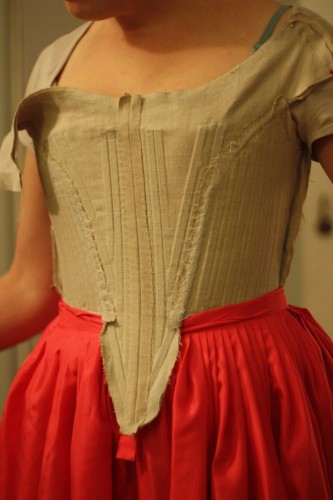


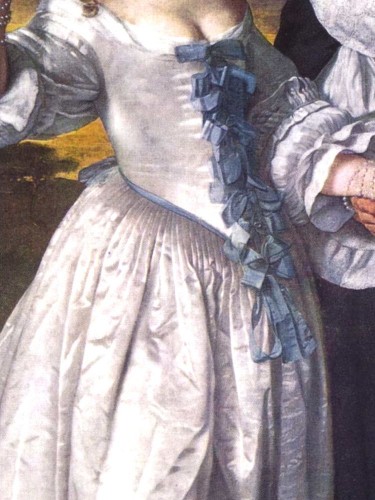

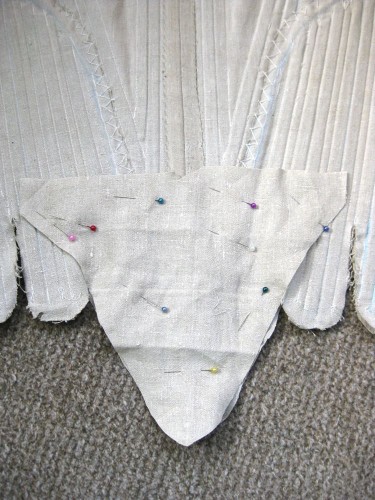
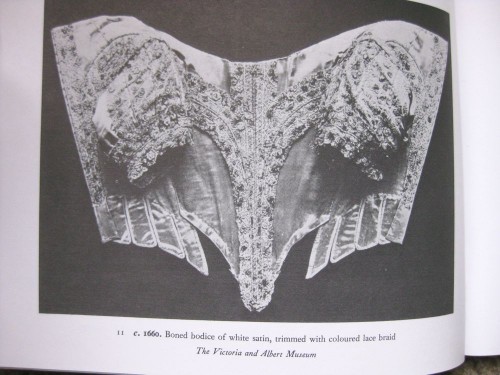
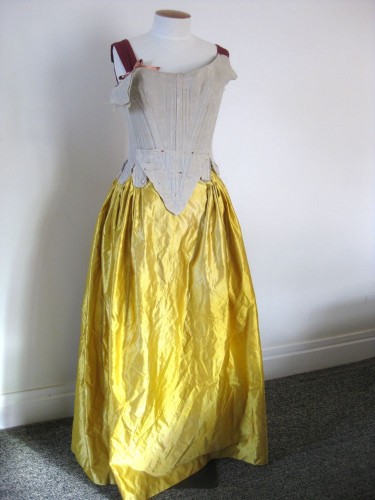
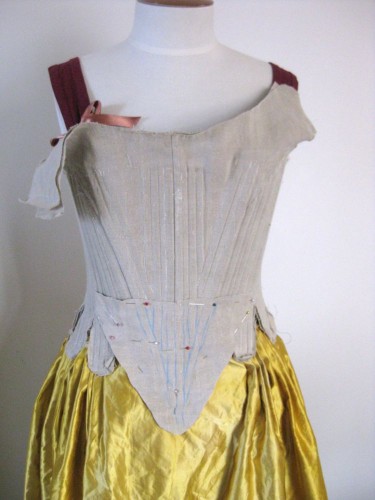
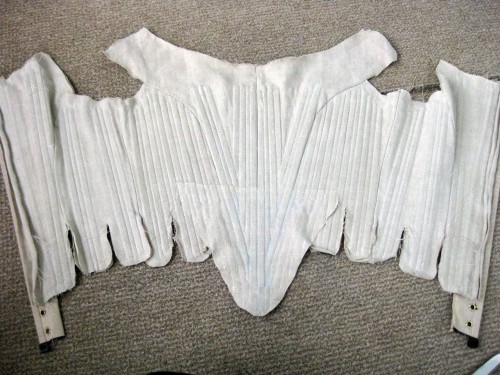
I would have patched it too. Totally. Everyone with a sane mind would have, I think.
Not that sane persons make costumes in the first place 😛 Seriously, your work is such inspiration to li’l me, who hasn’t touched a needle for much too long now. Must. Stop. This. Procrastination!
Dear Leimomi,
What an improvement. No dorkiness there. Those styles could look like women were wearing spoons or ladles. Very much a fashion victim situation. Hooray on successful avoidance!
Very best,
Natalie
Excellent. Impratcial excesses of any fashion are very dorky. Ones the require the wearer to sit like a truck driver or a cellist completely defeat the purpose IMHO! After all isn’t ladies’ fashion meant to be ladylike? 🙂
Hahahaha! Truck driver! Cellist! What a way with words! And sooooo true!
Totally admire your effort to avoid dorkiness, 2am in the morning, yes that is dedication, and mission accomplished, dorkiness avoided, beauty attained. My level of admiration for the work that you do and your commitment just rose another couple of levels.
Awww…thank you!
Oh yes indeed a clever, efficient way to remove dorkiness. I had to be done (sigh)
However, the subversive in me kinda wanted you keep it and instead put a large golden pom pom on either side at the base ;-). And possibly a tinkley golden bell on the end hey ho….Not very ladylike but v funny
Psht. You can do that with your 17th century dress. Mine is staying pom pom less!
*Titter* bah humbug
You make me feel relieved. There’s a patch on my Regency-stays-in-constant-progress, too. Admittedly, it’s the kind of patch that patches are originally meant to serve as, but still. Humans make patches from time to time. Thank you for the reassuring.